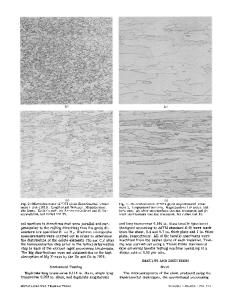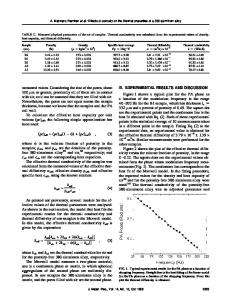Effect of supereutectic homogenization on incidence of porosity in aluminum alloy 2014 ingot
- PDF / 3,963,416 Bytes
- 12 Pages / 603.28 x 783.28 pts Page_size
- 41 Downloads / 298 Views
I.
INTRODUCTION
H O M O G E N I Z A T I O N of ingots at temperatures above the eutectic temperature (sometimes referred to as the supereutectic homogenization) reportedly increases workability, ductility, elongation, and impact strength of products fabricated from the ingots. It-6~ This is attributed to the combined effects of: (1) dissolution and reprecipitation of soluble phases in a desirable manner; (2) refinement of the structure of the partially melted and resolidified regions of the ingot; (3) elimination or reduction of both macro- and microsegregation in the ingot; (4) the redistribution and modification of the shapes of constituent phases; and (5) the reduction in the number of grain boundaries with brittle coarse constituents. However, various studies have shown that the desirable effects of the supereutectic homogenization are not realized because it increases the incidence of porosity in the ingot, l~,z,3,5,61The increase in relative porosity by the supereutectic homogenization sometimes is ascribed to undesirable levels of hydrogen and shrinkage in the as-cast ingot. E1,2,4,71 However, most of the studies conducted so far on supereutectic homogenization have been on either small laboratory-size castings u,21 or on castings which contained undefined t~'2.3,5,6] and undesirably high hydrogen levels (0.2 to 0.9 cm3/100 g).[4,71 No study has been conducted on commercial-size ingots or on ingots with lowhydrogen content (
Data Loading...











